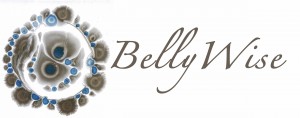The Benefits of Breastfeeding – part 2 (for the moms)
By katewright on Feb 26, 2013 in Breastfeeding, Health and Nutrition, Uncategorized Comments: 0. Tags:As part two in my blog series on breastfeeding, let’s take a look at how breastfeeding impacts the moms! (Also check out my post on how breastfeeding benefits the sweet babes!) Often this topic is overlooked, and moms choose to breastfeed solely because of the benefits it provides for their babies. The good news is that breastfeeding has substantial and exciting benefits for moms as well. Not only does breastfeeding reduce the risk of three of the most serious diseases for women (female cancers, heart disease, and osteoporosis), it also improves other aspects of health, results in a faster and safer postpartum period, and boosts emotional and psychological well-being.
Even in the first few moments and hours after a woman gives birth, breastfeeding assists her body to respond in a safe and healthy way to the recent experience of labor and birth. Breastfeeding increases a woman’s levels of oxytocin, the hormone that causes contractions during labor. (I will write a post about the amazing oxytocin sometime soon!) Because of this increase in oxytocin, her uterus continues to contract, resulting in a lower risk for postpartum hemorrhage and an easier recovery with less blood loss. (Although many women receive a dose of synthetic oxytocin immediately after birth to assist with this process, breastfeeding continues to offer this benefit beyond the immediate and throughout the crucial first days postpartum.) In addition, mom’s uterus returns to its normal, prepregnant size (called involution) faster than someone who does not breastfeed.
Breastfeeding moms miss less work because their kids aren’t visiting the doctor, and they save a good amount of money. Depending on how much a baby eats, a family can spend more than $1500 a year on formula and feeding supplies. Once breastfeeding is established, it also makes life easier for moms. They don’t have to worry about bringing bottles with them or storing formula at an appropriate temperature. Although there are many items every parent needs to cart around, breastfeeding moms have less stuff to carry with them when they leave the house.
Most of the time, when a woman breastfeeds, her menstruation does not return for at least a few months (and usually even longer). This lack of menstruation is called lactational amenorrhea. Lactational amenorrhea conserves a woman’s iron, resulting in a decreased risk of iron-deficiency anemia. It also acts as a natural form of birth control for the first six months, increasing child spacing and therefore reducing the risk of pre-term birth in subsequent pregnancies.
Breastfeeding also helps a woman lose weight faster, using 200-500 calories a day. To equate this usage to exercise, a woman would have to swim 30 laps or cycle uphill for an hour every day! The optimal weight loss that is a natural occurrence while breastfeeding has health benefits as well. Moms who have a history of gestational diabetes are at a lower risk for developing diabetes later in life, and when combined with the improved blood sugar control and the higher HDL cholesterol (the good kind) that breastfeeding offers, optimal weight loss results in a decreased risk for future heart problems as well. Women who breastfeed for 12-23 months (cumulative) enjoy a significantly reduced risk of not only cardiovascular disease and diabetes but also of hypertension (high blood pressure) and hyperlipidemia (high blood cholesterol). For women without a history of gestational diabetes, every year of breastfeeding decreases the risk of developing Type 2 Diabetes Mellitus by 4-12%. Every year of breastfeeding also reduces the risk of breast cancer by 4.3%; cumulative lactation for more than 12 months results in a significantly reduced risk of breast, uterine, and ovarian cancer. After weaning, a woman’s bone density returns to prepregnancy levels, and often her bones become even stronger. Breastfeeding actually reduces the risk of osteoporosis as well as that of hip fractures after menopause.
The skin-to-skin experience between mom and babe that occurs while breastfeeding is one of the most beautiful occurrences in life. While skin-to-skin, a mom’s body produces more of that wonderful oxytocin that not only helps with uterine involution! Oxytocin also creates a warm, calm feeling and assists with the production of prolactin, the milk hormone. Prolaction also has a very calming effect on mom, and a calm mom often leads to a calmer babe. Women who breastfeed have actually shown a less intense response to adrenaline when compared to women who do not breastfeed. Skin-to-skin is also one of the greatest ways for mom and babe to bond, an important contribution to their relationship and to the overall wellness of both of them. Breastfeeding is a natural way for mom to nurture and care for her baby, often resulting in confidence and security in her new role. Moms who breastfeed are at a lower risk of postpartum depression. Studies have also found that the rates of childhood abuse and neglect are significantly higher for those who do not breastfeed when compared to those who do breastfeed.
All of this goodness for moms from offering the healthiest nutrition to their babes! These physical, emotional, and long-term health benefits should not be overlooked. I would hope that every pregnant woman, her family, and her community have access to this important information to assist her with making a decision about providing for her baby.
Breastfeeding and the Use of Human Milk. Pediatrics. 2012; 129(3) Free full text
Coalition for Improving Maternity Services. Breastfeeding is Priceless. There is no Substitute for for Human Milk.
La Leche League International. A Well-Kept Secret: Breastfeeding’s Benefits to Mothers.
U.S. Department of Health and Human Services Office on Women’s Health. Why Breastfeeding is Important.
